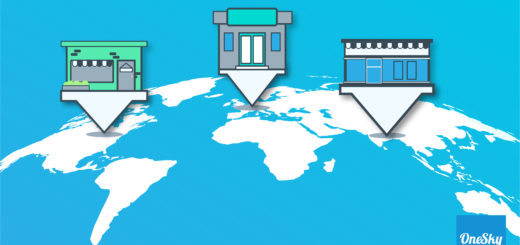What is Software Internationalization?
What is software internationalization?
Software internationalization is the process of optimizing your software development process for easy, evergreen deployment around the world—keeping you as the most relevant and accessible expert in your industry of choice. We know that this sounds easier said than done. However, with the right tools in place, you can create a flexible framework that is sustainable enough to last for several launches to come.
The process of software internationalization focuses on creating the foundation for all other localization or translation efforts can be built on top of. Understanding the differences between these concepts, as well as the considerations you should make as you move through the process of software internationalization, is essential for your successful strategy formulation and execution.
Below, we’re exploring the differences between internationalization and localization, as well as key considerations to make as you continue or begin the process of internationalization software updates.
Internationalization vs. Localization
While internationalization and localization are complementary concepts, they cannot be used interchangeably. Internationalization covers the process development needed to facilitate globalization as a whole, giving you a structure or framework to make your localization efforts effective through an evergreen foundation you can count on.
Localization, on the other hand, is a more nuanced process that is done at a regional level, requiring extensive study and research. The end goal of this process is to have a completely personalized and regionally appropriate experience for your clients in a range of different languages, preemptively addressing and over-exceeding their needs, expectations, and wants in every available product or service.

Translation and personalization are critical elements in this process, which can be effectively done by a localized cloud-based translation management system (TMS).
Internationalization software processes focus specifically on the preparations to help your software to go global, facilitating formats that empower a more comprehensive and effective localization process for your global markets.
Important Considerations for Internationalizing Your Software
To make your internationalization software processes as effective as they can be, we always recommend the use of a solid internationalization process strategy. You can apply the same conceptual steps across the range of different countries and international markets you’re expanding to, saving you some serious time in your project management.
Here are a few of the most critical considerations you should take before finalizing your internationalization software plan and deliverables:
Create Placeholders
A major focus of internationalized software is to be as evergreen as possible, helping you to save time on localization and deployment processes later on. Using placeholders is a strategy that you can leverage in every step of your software application process, leaving “gaps” or blank spaces in your source code that can be automatically filled by region during the software localization process.
This can be filled with a range of different localized variables, such as target languages, and the capacity for bi-directional reading. This can be an important facet of your design to support certain right to left languages (such as Hebrew or Arabic) and left to right languages (like English and Japanese).
You may also choose to use placeholders within various areas of the same region to account for shifting dialects among different locales. You can do this using Unicode to help correctly display local languages and character sets at every area of your user interface, offering a more seamless overall experience.
Focusing on concepts such as placeholders and cultural formatting from the startup phase of business can result in more effective success and adoption of your internationalization software experience across markets.
Enable Cultural Formatting
Cultural formatting goes beyond tailoring your content to specific cultural preferences. Instead, it is a major concept that can affect the usability and function of your internationalization software experience, affecting critical elements of function. These can include fonts, character and numerical sets for dates and times, and other number-based entries—such as phone numbers and currencies.
Beyond the more immediate benefit of client utility, you may find that cultural formatting and encoding built into your source code can lead to updates and refreshes done via automation or, at the very least, more efficiently over time. You won’t have to drastically change your framework for each update or expansion. You’ll simply update the placeholders as previously discussed left specifically for cultural formatting elements.

Organize Your Source Code
Properly organizing your source code and relevant resource files can help you to more quickly move on to the localization process after your internationalization software steps. Source code organization can be a helpful step that removes hard-coded elements prior to finalization that could lead to delays in localization down the line.
For example, instead of having to re-create your element structure with each rollout, you can simply harvest your relevant files and move them into your duplicate infrastructure by region. This keeps your team as efficient and effective as possible, and may minimize the risk of error in compilation and execution.
Beyond the benefits that this method can offer to your internationalization and localization processes, it also adheres to the concepts of best practice across the industry—encouraging replicability and efficient optimization down the line.
Optimize for Your Code Language
There’s no replacement for competent and optimized code execution. Investing in the tools for internationalization software creation and optimization can double your return and prevent you from having to do massive infrastructure overhauls.
Key elements to remember as you begin to optimize for your code language include:
- Data type congruence. Using proper and effective data types can be key to achieving and maintaining peak performance with each user session.
- Simplification. Removing any “cluttered” strings of code can reduce the potential for user error and back-end “clunkiness” that can undermine the quality of your delivery.
- Use of supplementary tools. Using algorithms and other forms of automation can help you to produce code more quickly, and may also positively impact user experience in deployment.
Internationalization is Easy with OneSky
Internationalization software steps are critical to take as you begin to prepare for localization, translation, and deployment. Considerations during this phase include placeholder creation, cultural formatting, code cleanup and optimization. You may also choose to source a quality translation management system to facilitate collaboration and ease at every step in the process, moving you toward the goal of a complete and profitable deployment.
OneSky offers translation management services (TMS) housed in a proprietary interface, supporting direct communication and quality assurance with certified linguists and experts. Whether you’re working within an internal system and need translation services, or you’re looking for an API-friendly TMS solution with complimentary integrations, the team at OneSky is here to help.
Our people-first workflow has helped hundreds of clients make an impact with their web applications. Connect with us today for more information, or give it a try for free with your own OneSky login.




 Written by -
Written by - 



 Written by
Written by 


